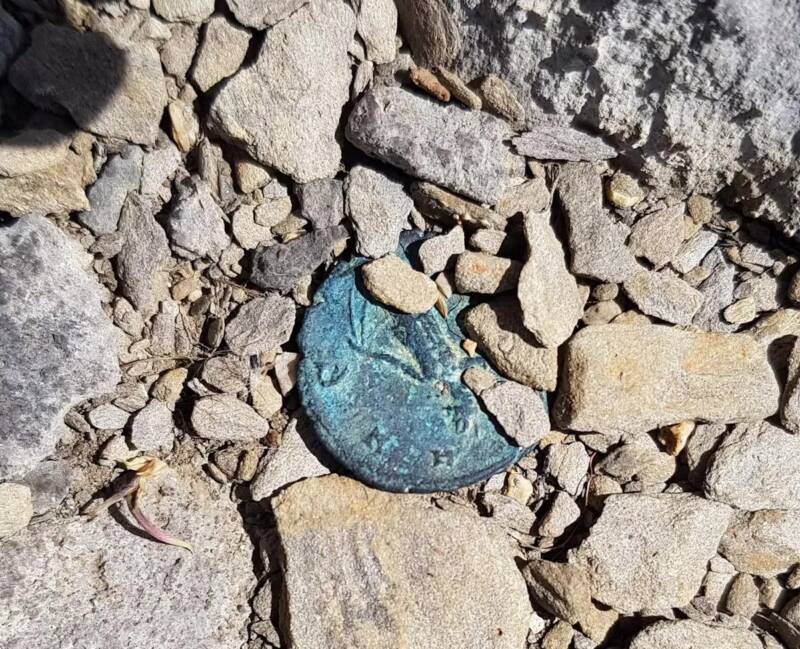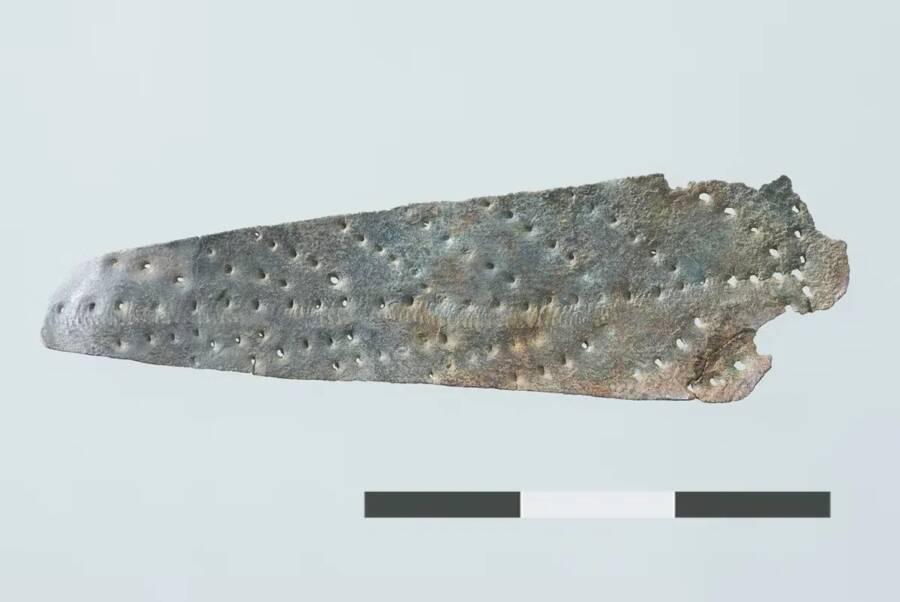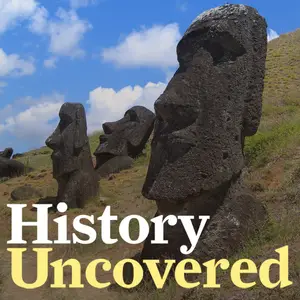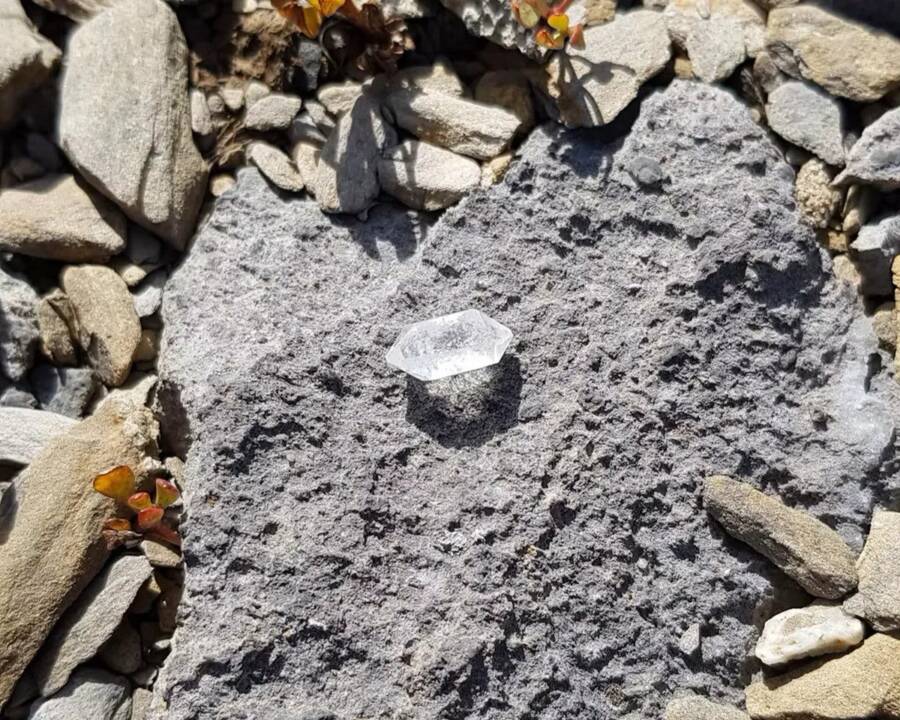Archaeologists have found 100 coins that may have been left as offerings as well as brooches, nails, crystals, and more.

Regula Glatz/Aarchaeological Service of the Canton of BernOne of the Roman coins left by the shrine as a supposed offering some two millennia ago.
On a summer day in 2020, a trail enthusiast hiking through the Swiss Alps spotted something on the ground — an ancient Roman coin. This discovery led to a veritable treasure trove, and archaeologists believe that the hiker inadvertently discovered a Roman shrine.
In a plateau between the Ammertenhorn and Wildstrubel mountains, some 8,500 feet above sea level, archaeologists investigating the hiker’s find uncovered 100 coins, 27 rock crystals, 59 Roman shoe nails, a brooch, and a fragmented votive plaque shaped like a leaf.
“We are only at the beginning of the investigations, but we think it is a holy place, where people went to deposit votive offerings — mainly coins, but also other objects — asking the deities for things or thanking them,” Regula Gubler, an archaeologist from the Education and Culture Directorate of the Canton of Berns told Newsweek. “I guess a kind of pilgrimage.”

Markus Detmer/Archaeological Service of the Canton of BernThe fragment of a votive plaque uncovered at the shrine site.
The location of the suspected shrine, Gubler explained, as well as the number of coins and other objects found there, suggested that ancient people may have looked upon the site as a place to worship mountain gods.
“It cannot be ruled out that the high plateau between the Ammertenhorn and the Wildstrubel massif, visible from afar, was a sacred place,” agreed the Canton of Bern and the Bernisches Historisches Museum in a statement.
The coins found at the site date between the first century C.E. and the fifth century C.E., roughly mirroring the rise and fall of the ancient Roman Empire. Gubler told Newsweek that they don’t appear to be a hidden cache or someone’s lost treasure, left all at once, but instead to have been distributed by people throughout the ages.

“It is always hard to give a value, but they are basically all small change — so not worth a lot and ‘easy’ to give away to the deities,” Gubler explained. “Our coin specialist says the range of the assemblage of coins is not a lost wallet or someone’s treasure, it fits much better with coins deposited in temples over a longer period of time.”
Aside from the majestic location, Gubler and other archaeologists also suspect that ancient Romans chose to worship at the site because of the abundance of rock crystals found nearby.
“The rock crystals we found occur naturally up there but may be part of the reason the location was considered significant/auspicious,” Gubler explained to Newsweek.

Regula Glatz/Archaeological Service of the Canton of BernArchaeologists discovered more than two dozen rock crystals at the site, suggesting that they perhaps played a role in the area’s religious significance.
In addition, the nearby town of Thun also contains several Roman temples, as well as an inscription discovered in 1926 about mountain goddesses. “The Latin inscription that it bears tells us that it had been offered by the local population and dedicated to the goddesses of the Alps,” the Canton of Bern and the Bernisches Historisches Museum explained.
Both Gubler and the Canton of Bern and the Bernisches Historisches Museum emphasized the significance of this shrine. While other shrines have been discovered at the bottom of mountains, this one would have taken significant effort to reach as it is far from both the road and hiking trails.
“By depositing their offerings, the faithful came into contact with these deities, for example, to earn their favor, to thank them, or to ask them to grant a wish,” the Canton of Bern and the Bernisches Historisches Museum explained in their statement.
“The findings of the Ammertenhorn shed new light on the element of statuary found a long time ago in Allmendingen,” they added. “People went to sacred places located not only at the gateway to the Alps but also in the high mountains.”
After reading about the ancient Roman shrine discovered in the Swiss Alps, discover how a statue of a Hercules-like figure from ancient Rome was discovered in the Roman sewers. Or, uncover some of the most fascinating facts about Ancient Rome.





